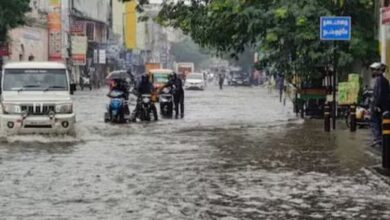Education Minister Dharmendra Pradhan campaigned for BJP in Greater Kailash Assembly
New Delhi: Indian Education Minister Dharmendra Pradhan ran a BJP campaign in the Greater Kailash Vidhan Sabha ahead of the Delhi Assembly Elections.
He was speaking at a community event in Delhi’s Shahapur Jat hamlet, which is home to many Oriya-speaking working people and is part of the Greater Kailash Vidhan Sabha.

During his speech, he accused the Delhi administration of misleading the city’s citizens.
“Over the last several days, I’ve attended a number of community events… For the last three days, I have been going to different Oriya Samaj social gatherings. Many of our Oriya-speaking working people reside in Shahapur Jat hamlet, which is under the Greater Kailash Vidhan Sabha of Delhi, which I visited today as part of the same series,” Pradhan remarked.
The minister was unreserved in his criticism of the AAP administration, pointing out problems like corruption and inadequate infrastructure. “I am sure there will be a change in Delhi,” he said. The Delhi ‘Aapda’ administration is vilified for being insensitive, dishonest, and corrupt. The people of Delhi were duped by them. Delhi’s roads are poor, and the water is unclean.
Pradhan’s comments coincide with a continuing political discussion over the administration and infrastructure of Delhi. He emphasized his faith in the transformation that Prime Minister Narendra Modi’s administration might bring and expressed confidence that Delhi citizens would look to him for leadership. “I am confident that the public of Delhi will trust PM Modi’s guarantee…” he said.
Eight Aam Aadmi Party (AAP) MLAs have resigned from their positions in the days leading up to the Delhi assembly elections. Following their denial of tickets to run in the next elections, they resigned.
In their letter of resignation, the MLAs pointed to a “significant deviation” from the ideals and principles upon which the party was established. They also charged that the party had abandoned its core beliefs of transparency and corruption-free governance and was instead displaying characteristics of opacity, centralization, and a lack of internal democracy.





